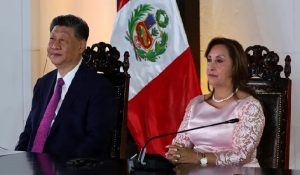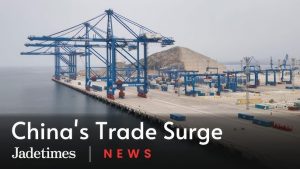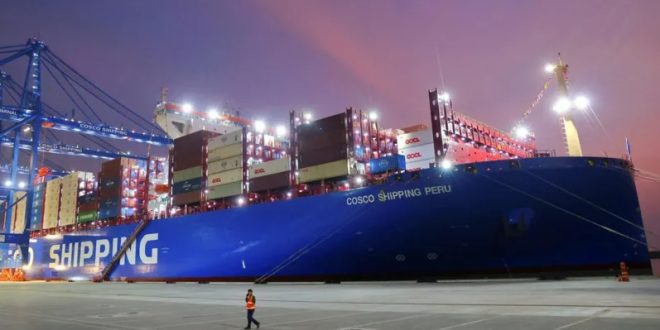18-11-2024
BEIJING: As the world waits to see how the return of Donald Trump will reshape relations between Washington and Beijing, China has just taken decisive action to entrench its position in Latin America.
Trump won the US presidential election on a platform that promised tariffs as high as 60% on Chinese-made goods. Further south, though, a new China-backed megaport has the potential to create whole new trade routes that will bypass North America entirely.
 President Xi Jinping himself attended the inauguration of the Chancay port on the Peruvian coast this week, an indication of just how seriously China takes the development.
President Xi Jinping himself attended the inauguration of the Chancay port on the Peruvian coast this week, an indication of just how seriously China takes the development.
Xi was in Peru for the annual meeting of the Asia-Pacific Economic Co-operation Forum (Apec). But all eyes were on Chancay and what it says about China’s growing assertiveness in a region that the US has traditionally seen as its sphere of influence.
As seasoned observers see it, Washington is now paying the price for years of indifference towards its neighbours and their needs.
“The US has been absent from Latin America for so long, and China has moved in so rapidly, that things have really reconfigured in the past decade,” says Monica de Bolle, senior fellow at the Peterson Institute for International Economics in Washington.
“You have got the backyard of America engaging directly with China,” she tells media. “That’s going to be problematic.”
Even before it opened, the $3.5bn (£2.75bn) project, masterminded by China’s state-owned Cosco Shipping, had already turned a once-sleepy Peruvian fishing town into a logistical powerhouse set to transform the country’s economy.
China’s official Communist Party newspaper, the People’s Daily, called it “a vindication of China-Peru win-win co-operation”.
Peru’s President Dina Boluarte was similarly enthusiastic, describing the megaport as a “nerve centre” that would provide “a point of connection to access the gigantic Asian market” but the implications go far beyond the fortunes of one small Andean nation. Once Chancay is fully up and running, goods from Chile, Ecuador, Colombia and even Brazil are expected to pass through it on their way to Shanghai and other Asian ports.
 China already has considerable appetite for the region’s exports, including Brazilian soybeans and Chilean copper. Now this new port will be able to handle larger ships, as well as cutting shipping times from 35 to 23 days.
China already has considerable appetite for the region’s exports, including Brazilian soybeans and Chilean copper. Now this new port will be able to handle larger ships, as well as cutting shipping times from 35 to 23 days.
However, the new port will favour imports as well as exports. As signs grow that an influx of cheap Chinese goods bought online may be undermining domestic industry, Chile and Brazil have scrapped tax exemptions for individual customers on low-value foreign purchases.
As nervous US military hawks have pointed out, if Chancay can accommodate ultra-large container vessels, it can also handle Chinese warships.
The most strident warnings have come from Gen Laura Richardson, who has just retired as chief of US Southern Command, which covers Latin America and the Caribbean. She has accused China of “playing the ‘long game’ with its development of dual-use sites and facilities throughout the region”, adding that those sites could serve as “points of future multi-domain access for the (People’s Liberation Army) and strategic naval chokepoints”.
Even if that prospect never materializes, there is a strong perception that the US is losing ground in Latin America as China forges ahead with its Belt and Road Initiative. (Int’l Monitoring Desk)
 Pressmediaofindia
Pressmediaofindia




